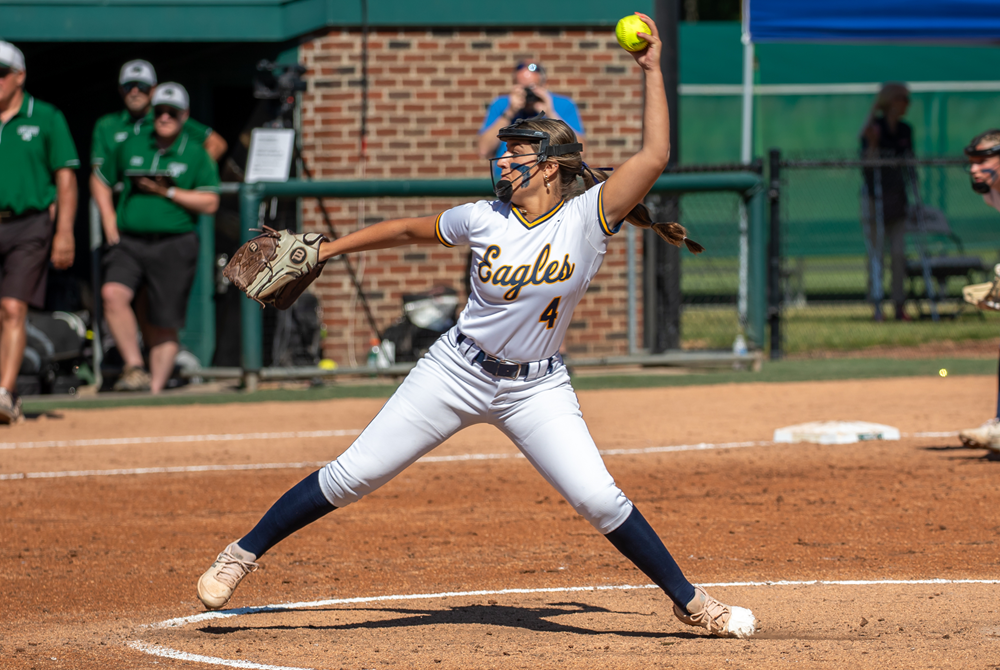
SAC Sound-off: It's not the Win, But the Race
February 8, 2012
All I ever wanted from my high school athletic career was to be an all-state runner in cross country.
My sophomore year, our cross country team won the MHSAA Division 3 title at Michigan International Speedway, but we didn’t have any all-state runners! I was so excited because our top five consisted of four seniors and me. I was our number three runner, and placed 44th overall. It seemed like just the start of big things.
Track season was a blast that year, even though I didn’t qualify for the MHSAA Finals in any events. But when I got back into cross country in fall 2010, I really wanted to be all-state. (The top 30 individuals in each race receive the honor.)
I trained really hard, but I couldn’t get any faster than when I was a sophomore. In fact, I was running slower than I did the year before. I ended up placing 47th in my division at the MHSAA Finals. I was extremely disappointed. But, the season was over. I decided it was time to focus on track.
I ran all winter and attended a few indoor meets. The training paid off when the season started. I was running as fast as I did the year before, and I was able to make our 3200-meter relay team. I qualified for the MHSAA Division 3 Final only with my relay team, but we placed third – and I finally was all-state.
But I wanted more. I wanted to earn the honor by myself.
I ran nearly 500 miles over the summer to prepare for the 2011 cross country season. I ran faster than I ever had before. I thought I had all-state in the bag this year.
And again, I fell short. Again, I placed 47th at MIS.
Yes, I was very disappointed in myself again. But I learned that getting the all-state medal is not what is important. Having fun is what really matters. And throughout my career, I’ve had plenty.
That doesn’t mean I’m not going to try to get all-state this spring. It just means that I am going to have more fun trying!
Travis Clous, Benzie Central senior
- Sports: Cross country, track and field, basketball
- Non-sports activities: Student section, pep band, marching band, concessions worker
- Favorite classes: Band and AP biology
- Must-see TV: "How I Met Your Mother"
- One shining moment: My sophomore year of cross country when we won the MHSAA Finals even though we did not have a single all-state runner.
- What’s next: I plan to attend either Hope College or Michigan State University to enter the pre-med field, but as of now. I am still undecided. I plan to run wherever I go, though.
- My favorite part of game day is: ... before the race, I listen to my Ipod. I usually listen to older music to get pumped. I also like to listen to Disney soundtracks; my favorite is the music from "Mulan." The songs usually get stuck in my head, and I end up singing them on the run. I feel like the music helps move me along.
PHOTO courtesy of Travis Clous (front), running at the MHSAA Division 3 Cross Country Final.


Performance of the Week: Hudsonville's Ava Snip
June 20, 2024
 Ava Snip ♦ Hudsonville
Ava Snip ♦ Hudsonville
Senior ♦ Softball
The Eagles' senior standout threw a complete-game one-hitter Saturday as Hudsonville defeated Lake Orion 5-0 in the Division 1 Final at Secchia Stadium, not only clinching the program's first championship since 2012 but also finishing a perfect season at 42-0. Snip struck out eight batters, walked three, and allowed just a fifth-inning single before getting out of that inning with a flyout and double play.
Snip finished this season with a 19-0 record, 0.54 ERA and 208 strikeouts over 129 2/3 innings pitched while splitting starts with senior Elly Koopman, who finished 18-0 and threw a shutout against Farmington Hills Mercy in the Semifinal. The team's 42 wins are tied for 10th-most for a single season in MHSAA history, and Hudsonville is the only team to win at least 42 games and finish undefeated. Snip was one of five Eagles selected to the Division 1 all-state first team. She next will attend Western Michigan University and study occupational therapy.
@mhsaasports 🥎POW: Ava Snip #softball #hudsonville #letsgo #champion #pitcher #part1 #highschoolsports #tiktalk #interview #performanceoftheweek #mistudentaid #fyp #MHSAA ♬ original sound - MHSAA
@mhsaasports 🥎POW: Ava Snip #tiktalk #questiontime #part2 #outerbanks #zachbryan #chickfila #nighttime #performanceoftheweek #mistudentaid #fyp #MHSAA ♬ original sound - MHSAA
Follow the MHSAA on TikTok.
MHSAA.com's "Performance of the Week" features are powered by MI Student Aid, a division within the Department of Lifelong Education, Advancement, and Potential (MiLEAP). MI Student Aid encourages students to pursue postsecondary education by providing access to student financial resources and information. MI Student Aid administers the state’s 529 college savings programs (MET/MESP), as well as scholarship and grant programs that help make college Accessible, Affordable and Attainable for you. Connect with MI Student Aid at www.michigan.gov/mistudentaid and find more information on Facebook and Twitter @mistudentaid.
Past 2023-24 Honorees
June 13: Claire Marosi, Grand Rapids Catholic Central lacrosse - Report
June 6: Emmry Ross, Onsted track & field - Report
May 31: Isaac Sturgess, Flint Powers Catholic baseball - Report
May 30: Abby Russell, Allen Park track & field - Report
May 23: Isabel Thelen, St. Johns tennis - Report
May 16: Ally Katinas, Novi lacrosse - Report
May 9: Peter Roehl, Rochester Adams golf - Report
May 2: Lilah Smith, Richland Gull Lake soccer - Report
April 25: Mason Mayne, Lawton track & field - Report
April 18: Alli Wright, Jenison softball - Report
April 11: Chloe Wishart, Trenton soccer - Report
March 28: Jenna Maki, Ishpeming basketball - Report
March 22: Jaremiah Palmer, Niles Brandywine basketball - Report
March 15: Leah Hodge, North Farmington gymnastics - Report
March 8: Darius Marines, Detroit Catholic Central wrestling - Report
March 1: Rylee Smith, Zeeland West bowling - Report
Feb. 22: Caleb Lewandowski, Traverse City West skiing - Report
Feb. 15: Jadin Mix, Onaway basketball - Report
Feb. 8: Onalee Wallis, Cadillac skiing - Report
Feb. 1: Abbey DeGraw, Rochester Hills Stoney Creek competitive cheer - Report
Jan. 25: Ewan Todd, Riverview swimming - Report
Jan. 18: Ashley Weller, Jackson Northwest basketball - Report
Jan. 11: Michael Baldwin, Saginaw Arthur Hill wrestling - Report
Dec. 15: Jena Fijolek, Fenton bowling - Report
Dec. 8: Sophia Wagner, Escanaba gymnastics - Report
Dec. 1: Isaiah Marshall, Southfield Arts & Technology football - Report
Nov. 24: Sarah Bradley, Clarkston Everest Collegiate volleyball - Report
Nov. 17: Kalieb Osborne, Waterford Mott football - Report
Nov. 10: Tekalegn Vlasma, Muskegon Western Michigan Christian soccer - Report
Nov. 3: Colton Kinnie, Birmingham Seaholm football - Report
Oct. 27: Lauren Timpf, Macomb Lutheran North golf - Report
Oct. 20: Alena Li, Okemos golf - Report
Oct. 13: Seth Norder, Grand Haven cross country - Report
Oct. 5: Paige Anderson, Muskegon Reeths-Puffer golf - Report
Sept. 29: MacKenzie Bisballe, Lake City volleyball - Report
Sept. 22: Jhace Massey, Gladwin football - Report
Sept. 15: Kaylee Draper, Sturgis swimming - Report
Sept. 8: Owen Jackson, Traverse City St. Francis tennis - Report
Sept. 1: Rachel Forsyth, Ann Arbor Pioneer cross country - Report

